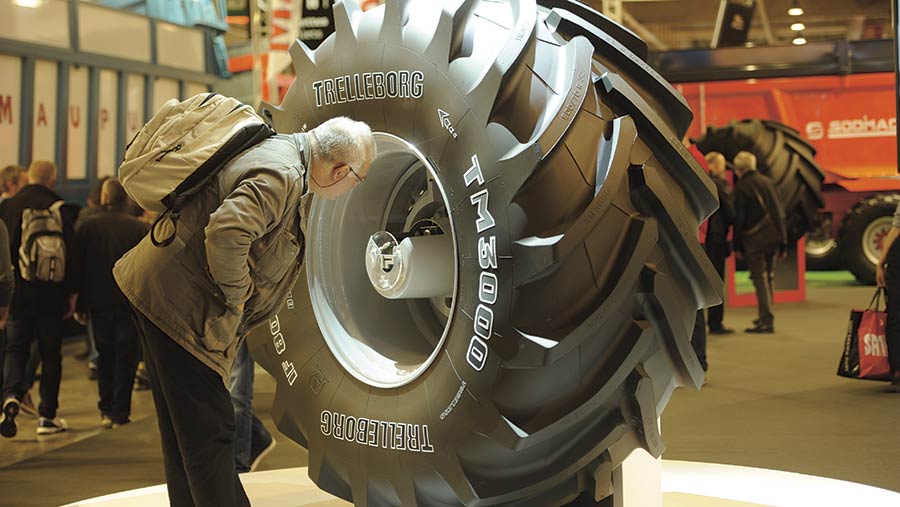Trelleborg’s self-adjusting VIP wheel kits: How they work
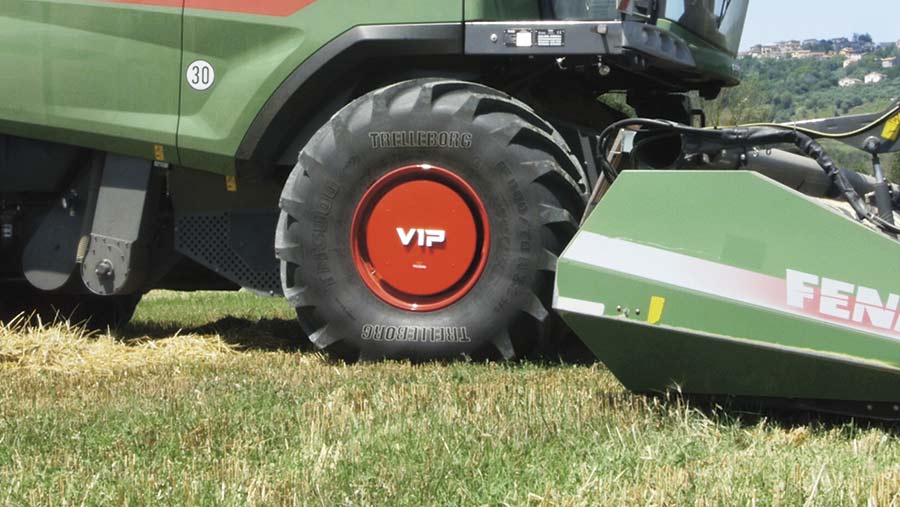
A clever new system designed by tyre giant Trelleborg promises to reduce soil damage by automatically altering combine tyre pressures as the grain tank fills and empties.
It’s an area the company has dabbled in before – its previous tyre management systems were able to monitor and change pressures – but they’ve always relied on the driver to make the adjustments.
This time around, the VIP kit is able to measure air pressure, tyre temperature and the load on each wheel before deciding whether to inflate or deflate to keep ground pressure constant without any manual intervention.
See also: Video: On test – Fendt’s monster 500hp 1050
The information used to make the decision is collected by a set of sensors and processed by a tiny computer. It works out when to engage the tiny compact on-board compressor to inject more air or pull the pin on the drain valve to reduce pressure.
Trelleborg says there are stacks of benefits including less tyre wear, lower fuel consumption and reduced soil compaction, and the gradual rise and fall of pressure means there’s no need for a super-high-output compressor, either.
How is it set-up?
Key components including the valve and compressor sit together in the centre of the wheel behind a solid protective cap. The other bits of the jigsaw – including the electronic control units and air hose – sit against the edge of the rim.
Rising prices
Trelleborg has announced that it will be increasing prices by 14% across its agriculture, forestry and construction ranges. It puts the rise down to a hike in the cost of raw materials, which have gone up by up to 50% compared with last year. The increase will be effective from 1 May and will be applied to all its brands, including Mitas.
Power is provided by the combine’s 12V supply, which is passed through the spinning wheel via carbon brush contacts. The system is also fitted with a small battery to store some extra juice.
The design sees a separate VIP wheel kit fitted to each corner of the machine. That way it is able to detect different loads on the same axle, which is important when combining across a side slope.
The lower wheel will typically have to handle a far greater load, will wear more quickly and cause more compaction, so needs to be run at a higher pressure to minimise damage.
Benefits are equally important when running on the flat. A 22t harvester with an empty tank can run with the rubber inflated to 1.2bar, but as 9t of grain is gradually added to the hopper the pressure in the tyres can be slowly cranked up to 2.2bar without any involvement from the driver.
It means the tyres’ total contact areas remain pretty constant and with their maximum footprint no matter how much grain is on-board.
Compare that to a standard set-up where the pressure will remain at 2.2bar, even with an empty grain tank. The result is a more convex profile on the tyre and a footprint that Trelleborg claims can be up to 27% smaller.
According to trials, soil compaction under combine wheels fitted with the VIP system can be cut by up to 10.5% and the knock-on effect, the company says, is a potential yield rise of 5% when compared with a standard wheel running at a constant pressure.
The new system also offers farmers the chance to run narrower 800mm wide tyres, rather than 900s, as they still flex in the field but are narrower for the road. However, it’s worth bearing in mind that it comes as a complete wheel kit, so retro-fit upgrades will be pretty expensive.
Can I buy it?
Trelleborg will only be supplying the system on Fendt combines to start with, but it will be rolled out to muckspreaders, slurry tankers and other self-propelled kit in the future.
Longer-term, the company says self-regulating wheels takes farm machinery one-step closer to complete automation. It is also working on a mobile app that will allow operators to monitor details such as pressures and footprint areas.
1 Drain valve
A small pressure relief valve is fitted in the centre of the wheel, just above the compressor. It opens gradually to reduce tyre pressure and, as it does so, blasts dirt, dust and straw residues away from the compressor’s air intake.
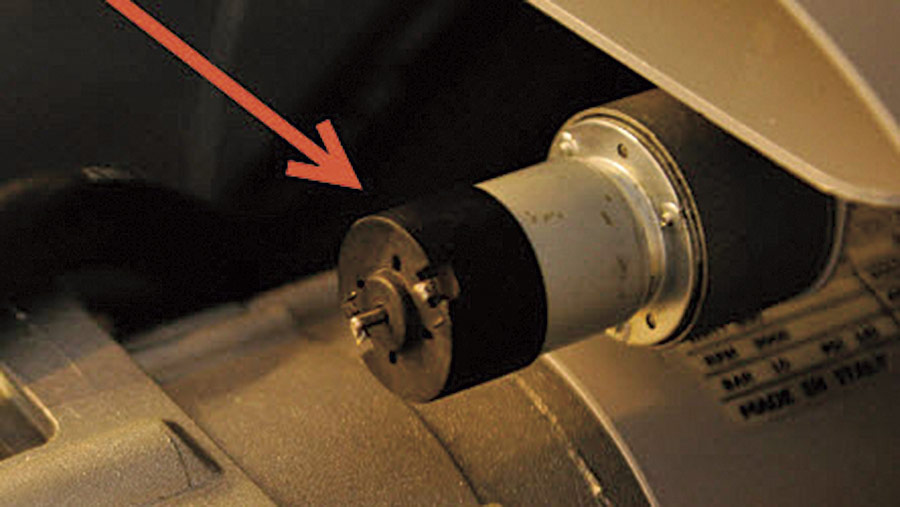
2 Compressor
The compressor is driven electrically from the combine’s own power supply via carbon brush contacts. Trelleborg is remaining tight-lipped on its size, but says it’s fairly small because the pressure injection tends to be a gradual process.
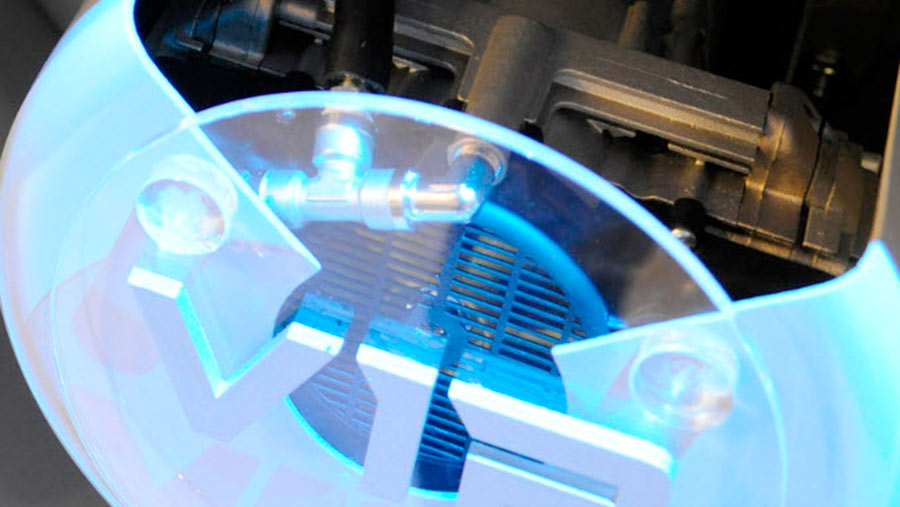
3 Air hose
An air hose runs between the compressor and drain valve. If you need to intervene manually then it’s possible to remove the hose.
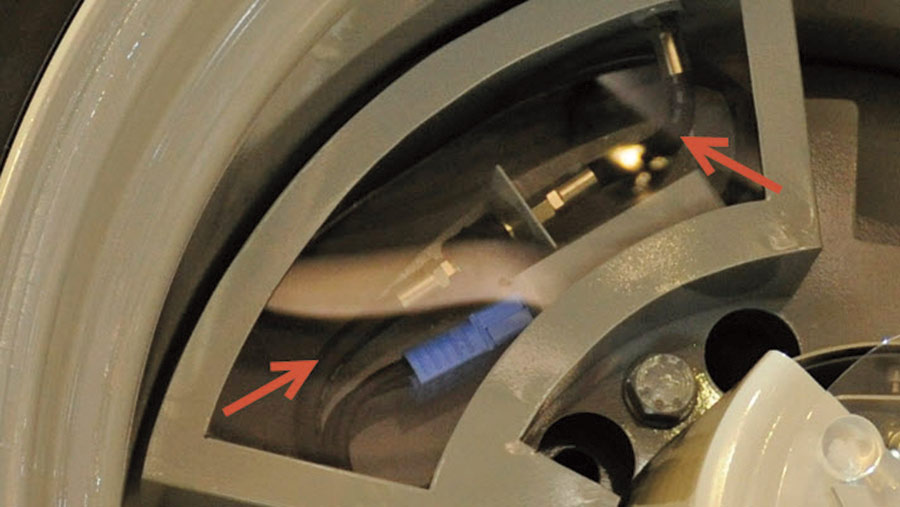
4 Electronic control
The system’s ECU is tucked behind a metal protective cover alongside the air hose. It houses the software that processes all the information regarding tyre pressure, temperature and load.
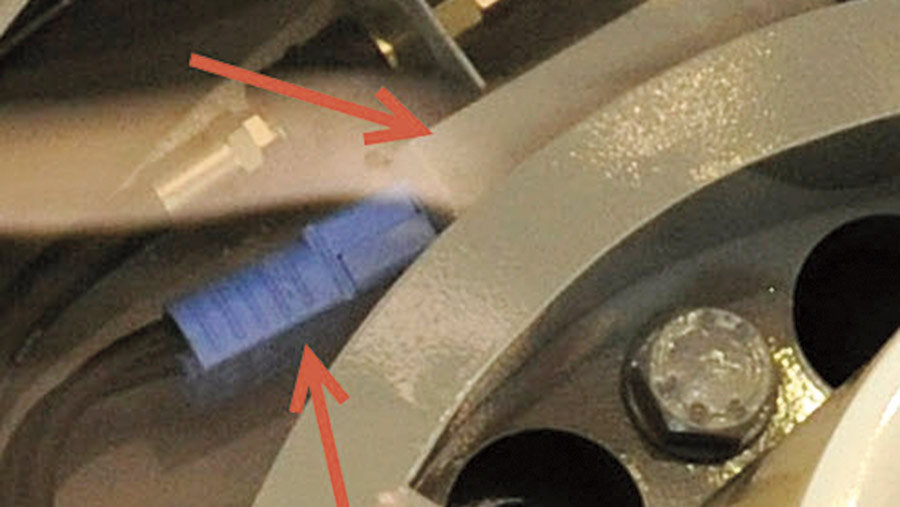
5 Self-propelleds only
For now, the VIP system is only available for self-propelled kit. Initially it will be fitted to Fendt machines, but longer-term it will likely be an optional extra for Claas, Vervaet and Vredo equipment.

